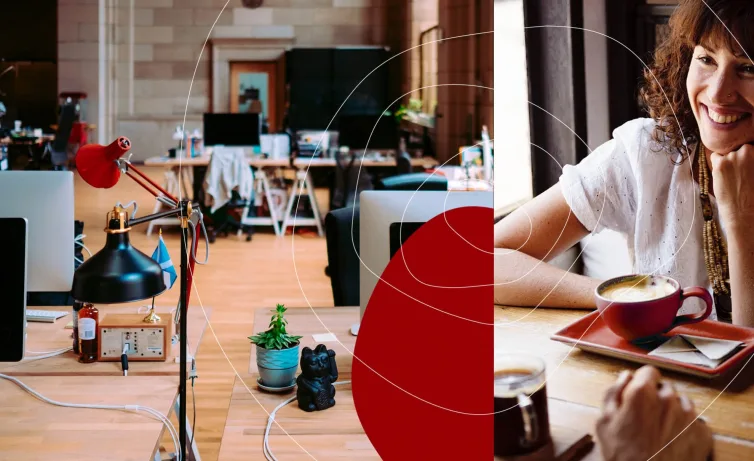Chameleon lets you build interactive user onboarding and product tutorials without writing code. Here’s why they passed on the growth hack hype to focus on creating real customer value.
If you’re reading this, you’re probably familiar with Paul Graham’s article “Growth,” where he lays out the difference between traditional businesses and startups. His definition:
“A startup is a company designed to grow fast.”
Fast growth has become the measure of success in the startup ecosystem. But while growth is a critical metric, it has to be understood within a holistic context.
As Graham explains, growth actually comes in three phases—starting with a period of slow or no growth. And rather than something to avoid, it enables long-term success and sustainable business.
Researchers at UC Berkeley and Stanford also explored growth at more than 3,000 startups. The key finding: premature scaling was the most common cause of failure. Whoops.
So how do you avoid this?
Laying our roots
Chameleon started in 2015 as an answer to sub-par user onboarding for tech products.
We were frustrated that we had to read docs and watch video tutorials to learn new products. And as producers, we were torn between improving our own user onboarding and keeping our product roadmap on schedule.
Our goal was to enable non-engineers to quickly create and deploy beautiful in-product experiences. These could guide new users to the “Aha!” moment, and help them discover important functionality.
When cofounder Brian and I first started working on this, we took a lean approach. We signed up a few customers—Amplitude, Mesosphere, and Threadable—that needed help before we made anything.
And building their custom onboarding experiences laid the basis for Chameleon: a simple web app to let users create and edit their own product tours.
Finding our true colors
“Early design decisions often persist much longer than anticipated.”
After some early success and backing from some great investors, we decided to redesign our product platform.
We knew that early design decisions often persist much longer than anticipated. So we wanted to build a great product that wasn’t just a consequence of our early hustle.
But no one had designed a UI for this kind of platform before, so we had to figure it out on our own.
The first version of Chameleon taught us to combine our customers’ desires with our own intuition.
We wanted to provide a What-You-See-Is-What-You-Get experience, so people could easily edit and update their tours.
So we looked for other sources of inspiration: website builders like Squarespace, email delivery tools like Intercom, and A/B testing tools like Optimizely.
And this is what we came up with — an interface that lived within the customer’s product and showed live previews:
It was a non-traditional web application with a major advantage: more people used Chameleon because it was already sitting in their own product. Much simpler than remembering to visit our website each time.
Now how do we grow from here?
Iterate first, grow second
This is our period of slow growth.
How do we measure slow-growth success? Well, as Sam Altman outlines in his “Before Growth” post:
“The right initial metric is ‘Do any users love our product so much they spontaneously tell other people to use it?’ Until that’s a ‘yes,’ founders are generally better off focusing on this instead of a growth target.”
Here are some keys that keep us focused on this slow-growth metric:
Focus on customer feedback over MRR: Instead of sweating over revenue as our main criteria for success, we use customer feedback and survey scores to keep us on track.
Prioritize fans over prospects: If growth was our goal, we’d build features to attract and convert potential customers. But our main target is customer happiness, so we focus on making our existing customers’ lives easier.
Stick to a small marketing budget: We don’t hire aggressively for sales and marketing, and we don’t spend much on advertising. Organic growth is our first goal.
Stay lean and maintain runway: We know that finding product-market fit isn’t easy, and it’s hard to predict. So we watch our spending, and nurture a cost-conscious company culture.
Block out the hype: It’s easy to get sucked into the hype and let competition drive your focus. We know what our competitors are doing, but we pay much more attention to what our existing customers are saying.
Other cases of slow growth
We’re not the only company benefitting from slow growth—and plenty of others have crashed by chasing fast growth too soon.
Ticketing platform Eventbrite was founded in 2006 and lived three lean years before their first venture round. By 2014 they were valued at over $1 billion. Cofounders Julia and Kevin Hartz shared their story of how early slow growth led to sustainable success.
On the flip side, on-demand companies Sprig and Homejoy pursued fast growth. They went after market share before having solid product and business fundamentals. The result? Spectacular implosions—even after raising nearly $120 million between them.
And then there’s SaaS platform Baremetrics who tried to grow fast through a freemium plan, and nearly drowned. After ending their experiment, they wrote about how this failure taught them to match resources to growth rate.
Don’t believe the hype
There are lots of opportunities in the Silicon Valley ecosystem. But one of the obvious downsides is the hype and hyperbole around growth.
Of course growth is a crucial part of the startup journey. But before moving too fast, spend time growing slowly, refining your product, and understanding your customers and market.
Once enough customers are raving about us, we’ll be switching to fast growth—and we’re excited to share the lessons that the next phase brings. Until then, we’re taking the slow road.






